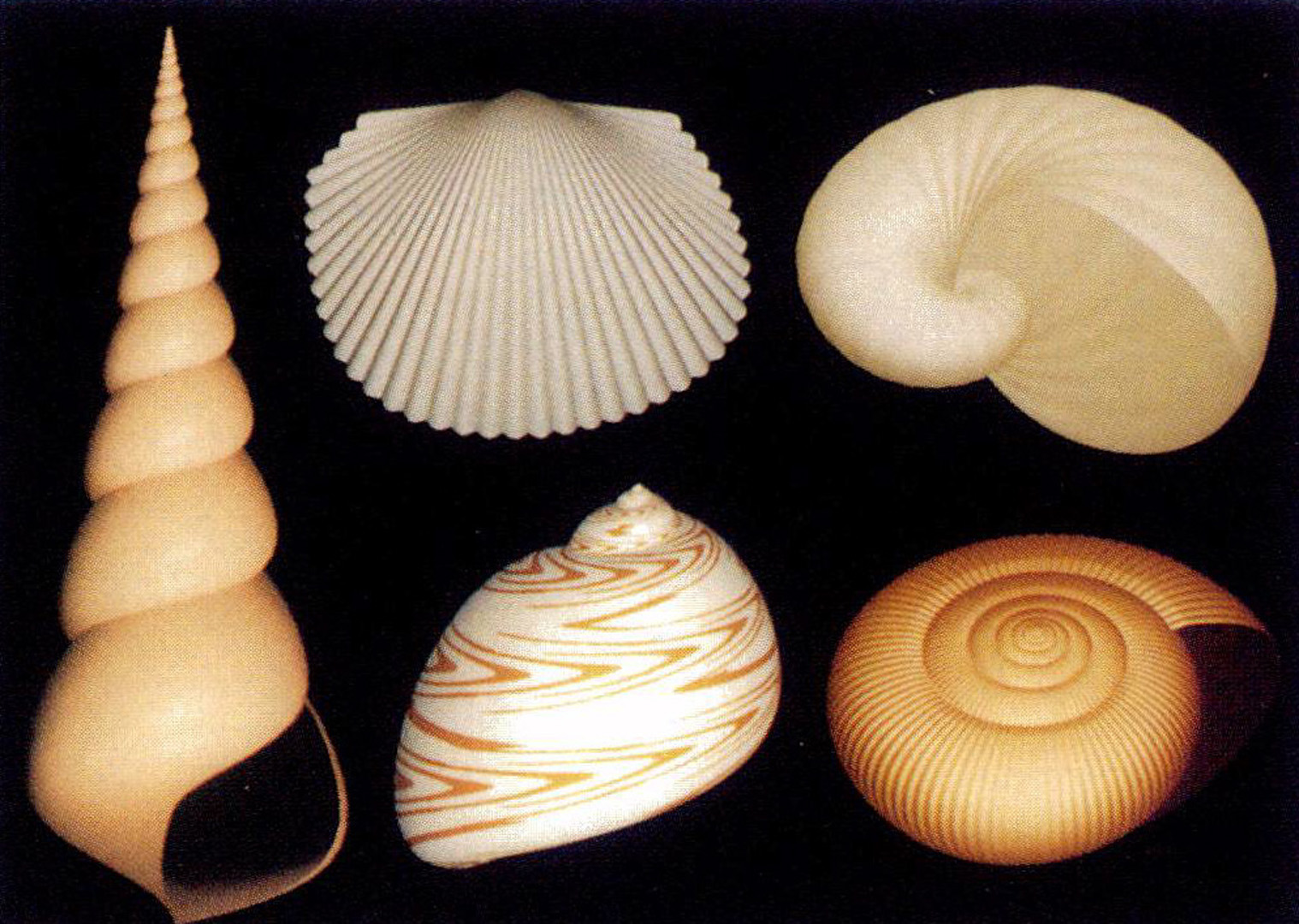“Modeling seashells” by Fowler, Meinhardt and Prusinkiewicz
Conference:
Type(s):
Title:
- Modeling seashells
Presenter(s)/Author(s):
Abstract:
No abstract available.
References:
1. R. Baker and G. T. Herman. Simulation of organisms using a developmental model, parts I and iI. int. Journal of Bio- Medical Computing, 3:201-215 and 251-267, 1972.
2. R. Bartels and I. Hardtke. Speed adjustment for key-frame interpolation. In Proceedings of Graphics Interface’ 89, pages 14-19, 1989.
3. W. Bronsvoort and F. Klok. Ray tracing generalized cylinders. ACM Transactions on Graphics, 4(4):291-303, 1985.
4. T.A. Cook. Curves of Life. Dover Publications, New York, 1979. Originally published in 1914, by Constable and Company, London.
5. M.B. Cortie. Models for mollusc shell shape. South African Journal of Science, 85:454-460, 1989.
6. H. S, M. Coxeter. Introduction to Geometry. J. Wiley & Sons, New York, 1961.
7. M. do Carmo. D~fferemial Geometry of Curves and Surfaces. Prentice Hall, Englewood Cliffs, 1976.
8. B. Ermentrout, J. Campbell, and G. Oster. A model for shell patterns based on neural activity. The Veliger, 28:369-388, 1986.
9. J.D. Foley, A. Van Dam, S.K. Feiner, andJ. F. Hughes. Cornpater Graphics: Principles and Practice. Addison-Wesley, Reading, Massachusetts, 1990.
10. L. Fox and D. F. Mayers. Numerical Solution of Ordinary Differential Equations. Chapman and Hall, London, 1987.
11. A. Gierer and H. Meinhardt. A theory of biological pattern formation. Kybernetik, 12:30-39, 1972.
12. N.R. Gordon. Seashells: A PhotographicCelebration. Friedman Group, New York, 1990.
13. L. G. Harrison. What is the status of the reaction-diffusion theory thirty-four years after Turing? Journal of Theoretical Biology, 125:369-384, 1987.
14. C. Illert. Formulation and solution of the classical seashell problem, li NuovoCimento, 11 D(5):761-780, 1989.
15. Y. Kawaguchi. A morphological study of the form of nature. Computer Graphics, 16(3):223-232, 1982.
16. H. Meinhardt. Models of Biological Pattern Formation. Academic Press, London, 1982.
17. H. Meinhardt. Models for positional signalling, the threefold subdivision of segments and the pigmentation patterns of molluscs. J. Embryol. exp. Morph., 83:289-311, 1984. Supplement.
18. H. Meinhardt and M. Klinger. A model for pattern formation on the shells of molluscs. Journal of Theoretical Biology, 126:63-89, 1987.
19. H. Meinhardt and M. Klinger. Pattern formation by coupled oscillations: The pigmentation patterns on the shells of molluscs. In Lecture Notes in Biomathematics, volume 71, pages 184-198. Springer-Verlag, Berlin, 1987.
20. H. Meinhardt and M. Klinger. Schnecken- und Muschelschalen: Modellfall der Musterbildung. Spelarum der Wissenschafl, pages 60-69, August 1991.
21. H. Moseley. On the geometrical forms of mrbinated and discold shells. Philosophical Transactions of the Royal Society of London, pages 351-370,1838.
22. J.D. Murray, MathematicalBiology. Springer-Verlag, Berlin, 1989.
23. P. Oppenheimer. Real time design and animation of fractal plants and trees. Computer Graphics, 20(4):55—64, 1986.
24. C.A. Pickover. A short recipe for seashell synthesis. IEEE Computer Graphics and Applications, 9(6):8-11, 1989.
25. C.A. Pickover. Computers and the Imagination. St. Martin’s Press, New York, 1991.
26. P. Prusinkiewicz and D. Streibel. Constraint-based modeling of three-dimensional shapes. In Proceedings of Graphics Interface ~86 m Vision Interface ’86, pages 158-163,1986.
27. D.M. Raup. Computer as aid in describing form in gastmlx~d shells. Science, 138:150-152,1962.
28. D. M. Raup. Modeling and simulation of morphology by computer. In Proceedings of the North American Paleontol. ogy Convention, pages 71-83, 1969.
29. D. M. Raup and A. Michelson. Theoretical morphology of the coiled shell. Science, 147:1294-1295,1965.
30. B. Sabelli. Guide to Shells. Simon & Schuster, New York, 1979. Edited by H. S. Feinberg.
31. d’Arcy Thompson. On Growth and Form. University Press, Cambridge, 1952.
32. d’Arcy Thompson. On Growth and Form, Abridged Edition. University Press, Cambridge, 1961.
33. A. Turing. The chemical basis ofmorphogenesis. Philosophical Transactions of the R o yal Society of London B, 237:37-72, 1952.
34. G. Turk. Generating textures on arbitrary surfaces using reaction-diffusion. Computer Graphics, 25(4):289-298, 1991.
35. C. H. Waddington and J. Cowe. Computer simulations of a molluscan pigmentation pattern. Journal of Theoretical Biology, 25:219-225, 1969.
36. A. Witkin and M. Kass. Reaction-diffusion textures. Com. purer Graphics, 25(4):299-308,1991.
37. S. Wolfram. Cellular automata as models of complexity. Nature, 311:419-424, 1984.





